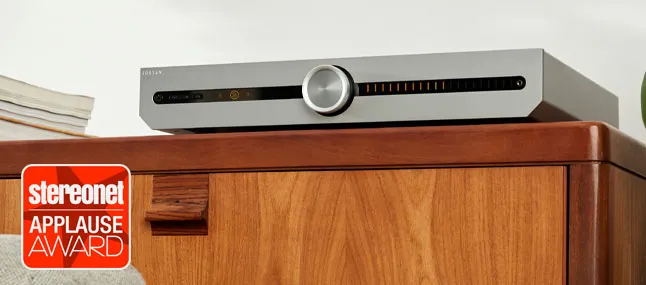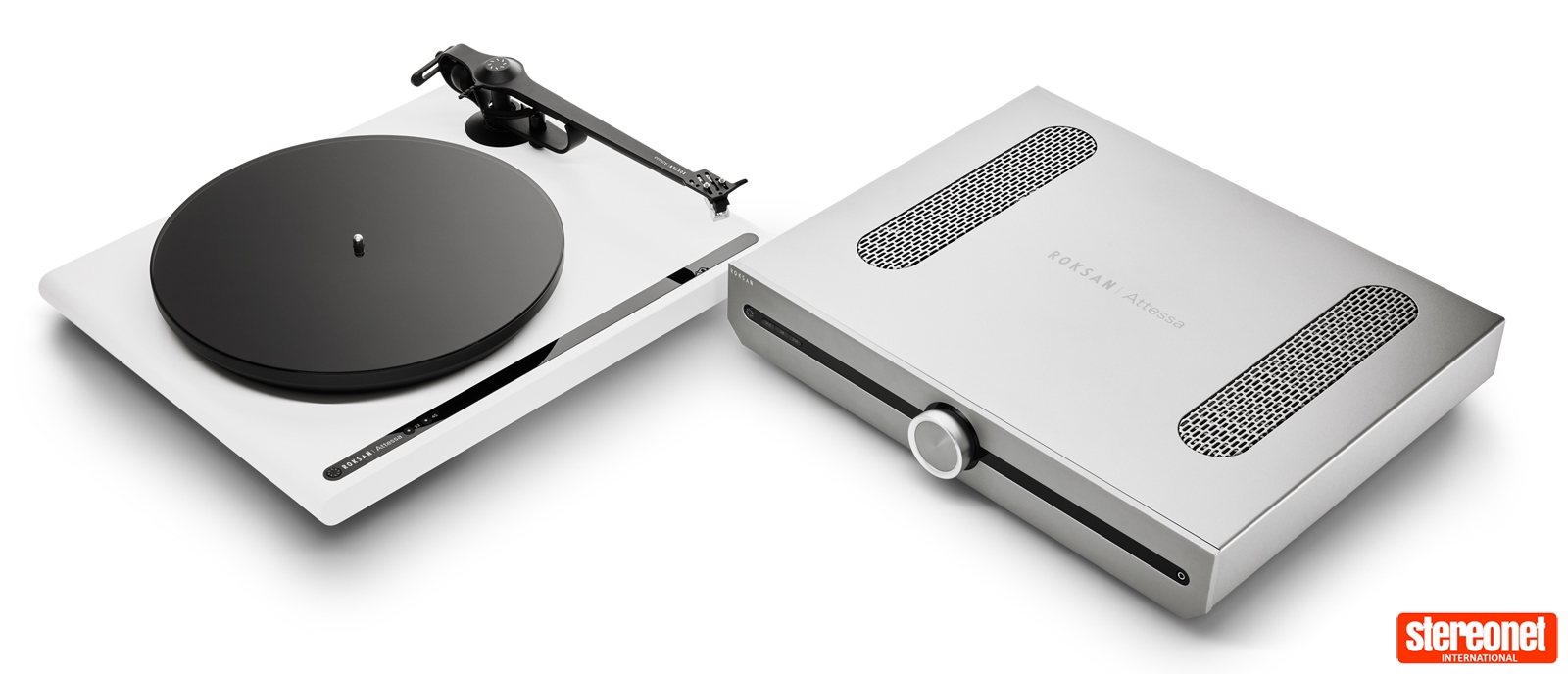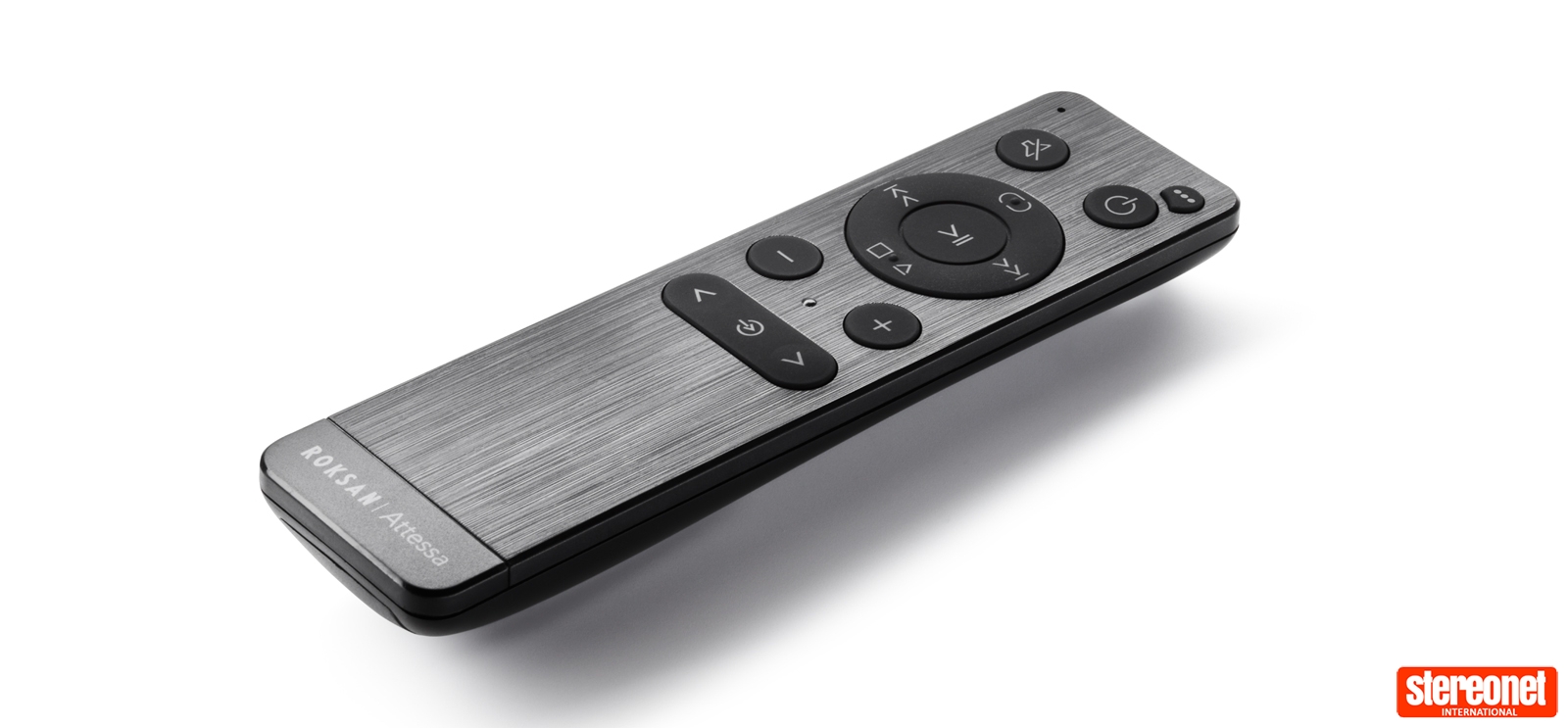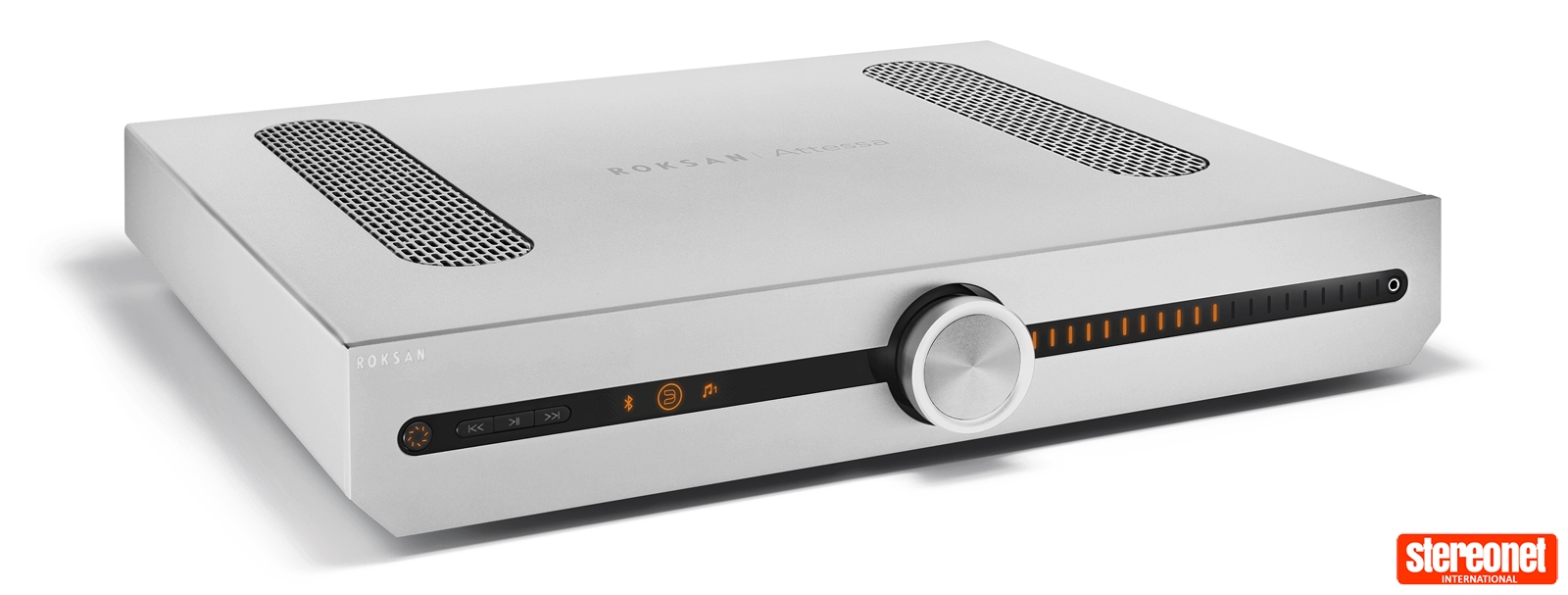Roksan Attessa Streaming Amplifier Review

John Pickford auditions a surprisingly capable mid-price integrated with both vinyl and network playback capability…
Roksan
Attessa Streaming Amplifier
£1,495

Streaming amplifiers are becoming increasingly popular, and it’s not hard to see why. For those happy to forego music ownership on physical media, they offer a handy one-box solution to music reproduction – just add loudspeakers! As you might expect, Roksan’s Attessa streaming amplifier is based upon the company’s popular Attessa integrated and is essentially an identical unit plus a streaming module.
Putting streaming aside for a second, the Attessa also caters for those of us with collections of music on CD and vinyl – the latter being a nice touch as the company has its roots in high-end analogue disc playback. The amp has two analogue line-level inputs plus a phono input for the onboard moving magnet phono stage. If you’re looking to build a comprehensive system from scratch, you should know that the Attessa range also includes a matching CD transport, as well as the turntable that so impressed David Price recently.
Roksan offers a special free app called MaestroUnite, which lets the amp and CD transport integrate to create an easy-to-control Attessa system. It also facilitates OTA (over-the-air) firmware updates for the streaming amp and provides a home for all of the range’s user manuals. The app also offers some user adjustability, such as left/right balance, control of phono stage gain settings and sensitivity of the analogue inputs and headphone output. A quirky Standby Plus feature is also available; however, there are no tone control options.

IN DEPTH
Despite Roksan’s analogue heritage, no compromises have been made with digital connectivity – this comes via optical and coaxial inputs, which can handle sample rates up to 96kHz and 192kHz, respectively. There are also two USB-A ports, one of which can be used for the supplied Wi-Fi dongle if a wired LAN connection is not preferred; as ever, a wired connection is recommended for optimum results. The rear panel also offers pre/sub RCA outputs, 12v trigger input and outputs and, of course, loudspeaker terminals.
The front panel, on the other hand, couldn’t be more minimalist, featuring a centrally placed volume/input selection dial flanked by a standby button and 3.5mm mini-jack input for headphones. The dial isn’t a conventional volume pot but rather a dual-function rotary encoder. It can be rotated to control volume, although it feels quite different in use from a standard pot, especially as it gives haptic feedback when scrolling through different inputs. Pressing the dial allows selection of the input source; however, it requires a hefty prod, and I found using the simple yet intuitive to use remote control the better option. The front panel OLED display indicates volume level, and I particularly welcome the safety and protection feature of the volume automatically reducing (if set to a high level) when headphones are connected.

The amplifier itself is a conventional Class AB design delivering a claimed 80 watts into 8 ohms or 130 watts into 4 ohms, so there’s plenty of power and current on tap for most real-world applications and more than enough to drive my insensitive Rogers LS3/5a speakers as well as my large, easy-to-drive Tannoys.
The streaming aspect of the amplifier is governed by the excellent built-in BluOS technology, which supports over twenty streaming services and allows multi-room functionality if you’re lucky enough to have more than one Attessa system at home. Volume can also be adjusted via this app, which is handy if your remote control isn’t to hand. The onboard TI Burr-Brown DAC provides up-to-date audio processing.
A nice touch is the LED visible through the vented top plate of the unit showing the connection and operational status of the BluOS module. For example, a solid blue light indicates that the player is in Ready Mode, connected to the network and ready to stream music, while a blinking blue light tells you that the system is muted. Other coloured lights (green, purple, red and white) inform you of a variety of statuses depending on whether they are blinking or not. It’s quite a show, one that, for some strange reason, reminded me of Christmas!

THE LISTENING
For most of the time spent with Attessa, I streamed music to a very good standard via Qobuz. But as a dyed-in-the-wool vinyl junkie, I also made use of its capable onboard phono stage, which impresses with its clarity and subtle warmth. Thanks to its adjustable sensitivity, it will work with pretty much any moving magnet cartridge ever made.
One of this amplifier’s key character traits – in both analogue and digital domains – is its timing and sense of overall musicality. For something of this modest price, it has a fantastically good turn of speed. Indeed, at times the amp’s agility threatened to outrun my Naim NAIT XS 3 in terms of pace, rhythm and timing, which is remarkable given that the standard Attessa amp (without the streamer) costs less than half the price of the XS 3!
Playing the new As It Should Have Sounded 2022 remix of Too-Rye-Aye by Dexys Midnight Runners demonstrated the nimble nature of the Attessa amp perfectly. Love it or hate it, this forty-year-old chart-topping tune positively zipped along with a trip-hammer transient response highlighting the crack of the snare drum, the beater click of the bass drum and the leading edges of Helen O’Hara’s fiddle. Kevin Rowland’s impassioned, if occasionally indecipherable, vocal retained all its emotion, proving that Attessa is no one-trick pony and can convey the cerebral as well as the visceral aspects of music.

Both of these attributes were on display during a play-through of Marillion’s Misplaced Childhood, the band’s 1985 ‘dealing with a break-up' album that was released just as my first sweetheart decided to unceremoniously dump me! The faultlessly played tricky time signatures can sound mechanical through more clinically inclined amps, yet the Attessa’s inherent musicality ensured the emotional quotient of the songs wasn’t swamped by the technical prowess of the musicians.
Heart Of Lothian, with its banks of mid-eighties synth textures and soaring lead guitar lines, tugged at my heartstrings as the song was replayed as a complete integrated performance. The whole piece added up to far more than the sum of its parts. The Attessa’s disinclination to forensically pull apart the individual elements of the recording proved extremely satisfying, leaving me to wallow in the mood of the song rather than reassemble the mix in my head. By the way, there is a degree of tonal warmth to this amplifier which prevents the lightning-strike speed of its performance from becoming fatiguing and will complement brighter-balanced modern speakers.
Arriving in my Qobuz library just as the Roksan was delivered was Arctic Monkeys’ new album, The Car. It proved a joy to discover through the Attessa, prompting me to dig out their previous release, Tranquillity Base Hotel And Casino, with which I’m more familiar. The noted warmth brought out the deeper tones of Alex Turner’s voice, casting him more obviously as the crooner he seems to aspire to be these days. The title track has a lush, expansive sound with lots of atmosphere, mainly due to the liberal amount of studio reverb used in the mix. Through the Attessa, my attention wasn’t immediately drawn to these ambient effects, instead focusing on the meat of the matter, such as the funky melodic bass line and those close mic’d, heavily compressed vocals.

The punch and drive of the Attessa worked to great effect on Laura Marling’s Alexandra single from 2020, the drier, upfront recording well suited to the character of the amp, which seems more at home with intimate recordings than big, echo-drenched sonic soundscapes. As such, I found myself instinctively searching my Qobuz library for music that the Attessa would bring out the best in with its fleet-footed, no-nonsense nature. Otis Redding’s Otis Blue was right up the Attessa’s street, enthusiastically expressing the tightness of Donald ‘Duck’ Dunn and Al Jackson Jr’s rhythm section and the raw emotion of the superlative vocal performances.
The natural, unforced sound of the amp was most apparent during an evening listening to various jazz quartet and quintet recordings from the nineteen sixties. One aspect of the Attessa’s direct performance worked extremely well here, seemingly pulling in the more extreme stereo placement of instruments to produce a more cohesive listening experience. Herbie Hancock’s lovely 1965 recording Maiden Voyage illustrated this point clearly, as although Tony Williams’ drums remained hard-panned to the right speaker with Freddie Hubbard blowing his trumpet through the left, the performance gelled in a way it never does on more analytical systems.

THE VERDICT
 Roksan’s new streaming amplifier is a welcome addition to the company’s already strong Attessa range, offering many useful features and excellent sound quality for the money. It doesn’t major on epic, panoramic soundstaging, nor is it the last word in detail and dynamics, yet it still gets straight to the heart of a musical performance. There’s rhythmic alacrity in spades, and the tonal balance is nicely judged as long as you’re not looking for thunderous bass or stratospheric super-top treble.
Roksan’s new streaming amplifier is a welcome addition to the company’s already strong Attessa range, offering many useful features and excellent sound quality for the money. It doesn’t major on epic, panoramic soundstaging, nor is it the last word in detail and dynamics, yet it still gets straight to the heart of a musical performance. There’s rhythmic alacrity in spades, and the tonal balance is nicely judged as long as you’re not looking for thunderous bass or stratospheric super-top treble.
What you get is a snappy, punchy, yet warm-natured sound that makes music effortlessly enjoyable. This, coupled with the brilliant BluOS streaming tech, makes for a wonderful way to enjoy your online music library and offers surprisingly good vinyl replay. So if you’re in the market for a versatile musical amplifier in this price range and are contemplating subscribing to a hi-res streaming service, you should seriously consider this – it’s a fantastic performer.
For more information visit Roksan
John Pickford
A professional recording engineer since 1985, John strives for the ultimate in sound quality both in the studio and at home. With a passion for vintage equipment, as well as cutting edge technology, he has written for various British hi-fi and pro-audio magazines over the years.
Posted in: Amplifiers | Integrated Amplifier | Applause Awards | 2022 | Sources | Streamers | Hi-Fi
JOIN IN THE DISCUSSION
Want to share your opinion or get advice from other enthusiasts? Then head into the Message
Forums where thousands of other enthusiasts are communicating on a daily basis.
CLICK HERE FOR FREE MEMBERSHIP
Trending
applause awards
Each time StereoNET reviews a product, it is considered for an Applause Award. Winning one marks it out as a design of great quality and distinction – a special product in its class, on the grounds of either performance, value for money, or usually both.
Applause Awards are personally issued by StereoNET’s global Editor-in-Chief, David Price – who has over three decades of experience reviewing hi-fi products at the highest level – after consulting with our senior editorial team. They are not automatically given with all reviews, nor can manufacturers purchase them.
The StereoNET editorial team includes some of the world’s most experienced and respected hi-fi journalists with a vast wealth of knowledge. Some have edited popular English language hi-fi magazines, and others have been senior contributors to famous audio journals stretching back to the late 1970s. And we also employ professional IT and home theatre specialists who work at the cutting edge of today’s technology.
We believe that no other online hi-fi and home cinema resource offers such expert knowledge, so when StereoNET gives an Applause Award, it is a trustworthy hallmark of quality. Receiving such an award is the prerequisite to becoming eligible for our annual Product of the Year awards, awarded only to the finest designs in their respective categories. Buyers of hi-fi, home cinema, and headphones can be sure that a StereoNET Applause Award winner is worthy of your most serious attention.





